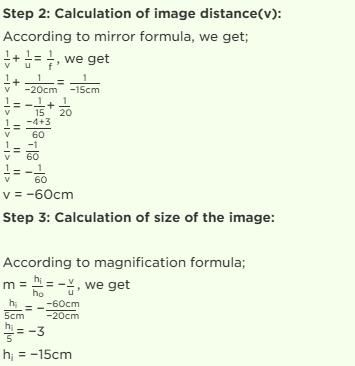Test: Reflection by Spherical Mirror - Class 10 MCQ
15 Questions MCQ Test Science Class 10 - Test: Reflection by Spherical Mirror
When a mirror is rotated through an angle θ, the reflected ray from it turns through an angle of
A ray of light, which is parallel to the principal axis of the concave mirror, after reflection passes through the
A ray of light is reflected by the pole of a concave mirror at an angle of 80o. The angle of incidence will be
The nature of the image formed by the convex mirror is always
For a spherical mirror with a focal length of 12 cm, what is the radius of curvature?
To determine focal length of a concave mirror a student obtains the image of a well lit distant object on a screen. To determine the focal length of the given concave mirror he needs to measure the distance between:
An inverted image can be seen by using a convex mirror under what circumstances ?
A ray of light passes through the focus of the mirror. After reflection, it
Which one of the following pairs regarding spherical mirrors is correctly matched?
What determines the position of the image of a point object formed by a spherical mirror?
The image formed by a concave mirror when the object is placed between the focus and center of curvature is _______.
In the New Cartesian Sign Convention, which distance is considered positive?
An object 5 cm tall is placed 20 cm in front of a concave mirror with a focal length of 15 cm. What is the height of the image?
An object 2 cm tall is placed 10 cm in front of a concave mirror with a focal length of 5 cm. What is the size of the image?
|
80 videos|662 docs|80 tests
|















